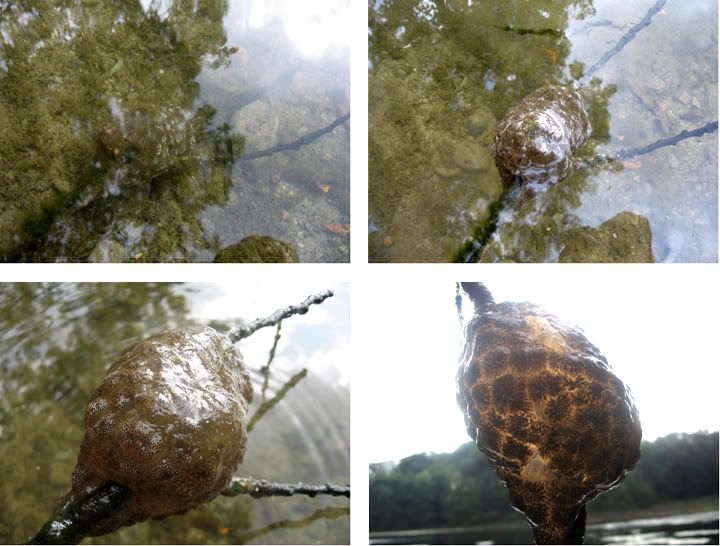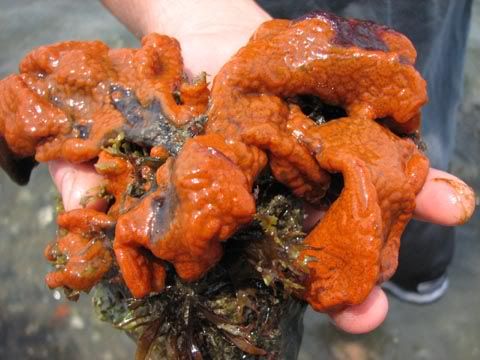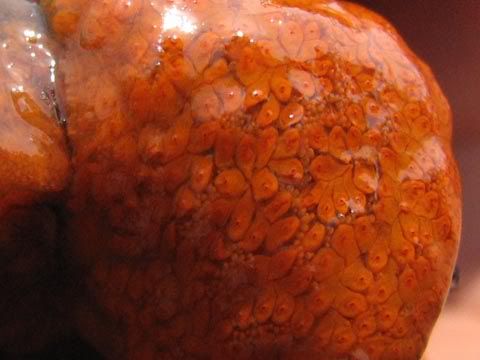365 Urban Species. #260: Freshwater Bryozoan

Photos by urbpan. A small colony attached to a stick is pulled out of the water to be examined. Location: Ward's Pond, Boston.
Urban species #260: Freshwater bryozoan Pectinatella magnifica
A football-sized clump of gelatinous material in a pond may not be an egg mass. You may encounter a colony of animals called bryozoans, or as that obsolete scientific name translates, "moss animals". Bryozoans make cockroaches look like spring chickens: their fossil record extends back 500 million years. The vast majority of the thousands of species in this group live in salt water, with only 50 or so found in fresh water. This one, Pectinatella magnifica (with no good common name but sometimes referred to as "blobs") is the one most often seen in urban waterways. I have seen it in Spectacle Pond at Mt. Auburn Cemetery in Cambridge Mass., and recently found it in Ward's Pond in Boston. It also apparently occurs in the waters of the Connecticut and Potomoc rivers. Bryozoans have a similar ecology to corals. Hundreds of thousands of individual animals (or "zooids" in zoological jargon) live together, secreting a jelly-like matrix, growing quickly in favorable conditions. Favorable conditions include water temperatures of 68 degrees or more (20 degrees or more celcius) and large amounts of food: single-celled algae, bacteria, and other microorganisms, conditions not uncommon in urban ponds in summer. Each zooid has tiny tentacles with which it grabs food particles. Rapidly growing bryozoan colonies are alarming to some people, and may create problems when they form on intake pipes and other structures. However, it seems that their presence and growth may potentially be a good indicator of water quality.

Found in Pleasure Bay, South Boston. Photos by cottonmanifesto.
